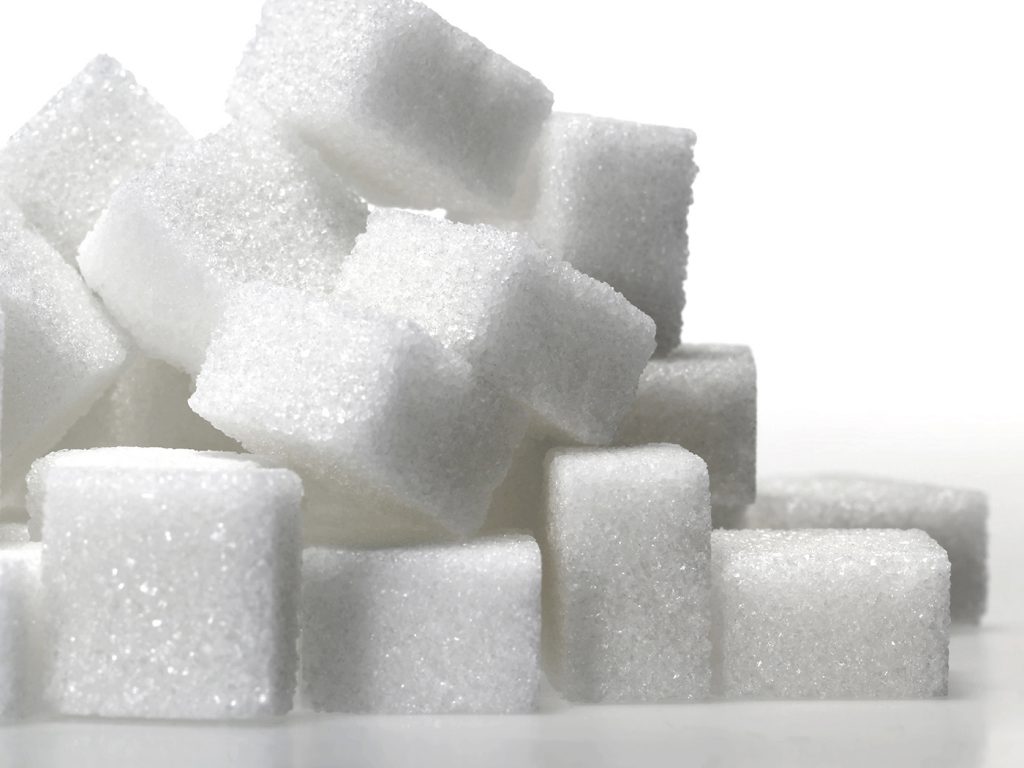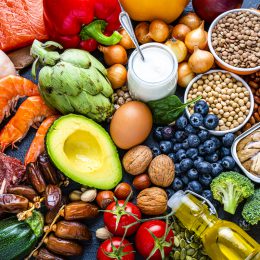6 Simple Ways to Eat Less Sugar—Without Giving Up Dessert
Adopt these habits now to save yourself tons of sugar, calories, and potential health problems in the long run.

Eating less sugar is a good idea for many reasons.
An uncontrollable sweet tooth not only makes you pack on pounds, but research shows that the more sugar you eat, the higher your risk of death from heart disease. It’s also been shown to mess with your mood, impair brain function, and raise the risk of diabetes and maybe even cancer.
The research is compelling, but if you’re really going to cut back on sugar, there’s more you need to know. First, sugar itself isn’t the enemy. Glucose, a form of sugar, is the main source of energy for every cell in your body, and our brains need it to function properly, explains Keri Gans, R.D.N., author of The Small Change Diet.
When we talk about sugar’s negative health consequences, we’re talking about added sugars—not the naturally occurring kind, which are found in foods like fruit, dairy, whole grains, and even vegetables such as beets and corn. “They contain nutrients like vitamins A and C, folic acid, fiber, and minerals that are essential for good health,” Gans says.
The problems come when you choose packaged and processed foods made with added sugars that contribute zero nutritional benefits—and quickly overload your body with the sweet stuff.
How Much Is Too Much Added Sugar?
The American Heart Association recommends that men consume no more than nine teaspoons, or 36 grams, of added sugar per day. For women, the recommended daily limit is six teaspoons, or 25 grams.
These may seem like reasonable numbers, but most people are eating way more than that. The National Institutes of Health reports that the average American adult eats almost 20 teaspoons, or 80 grams, of added sugar per day.
The good news is that it’s 100 percent possible to slash your sugar intake without giving up all that makes life so sweet. Here are six simple habits you can adopt today that will save you tons of sugar—and calories—in the long run.
1. Look at Ingredients First, Nutrition Info Second
Added sugar lurks in seemingly innocuous foods, such as tomato sauces, salad dressings, low-fat yogurt, and even bread. The most surefire way to avoid these hidden sugars is to make your own, but that’s not always practical. So instead, compare labels when you’re at the supermarket, Gans says.
That means looking beyond the nutrition info to the list of ingredients. Naturally occuring sugars and the added stuff are all clumped together under “sugar” in the nutrition label, but if you see words like brown sugar, corn syrup, cane juice, honey, agave, or any word that ends in “ose” (sucrose, fructose, maltose) in the ingredients, that means there’s added sugar. By law, ingredients must be included in descending order by weight, so the higher up on the list you see one of these additives, the more sugar per bite.
Another good habit: Always opt for the unsweetened version of products—whether you’re buying applesauce, nut butter, or almond milk. Switching from sweetened vanilla almond milk, which contains cane sugar or evaporated cane juice, to unsweetened vanilla, which lists no added sweeteners, saves the equivalent of about three teaspoons of sugar per cup.
2. Build a Better Breakfast
Having a sweet breakfast will set you up for all-day sugar cravings. And yes, that includes your sugar-sweetened coffee. Skip the sugar packet—which delivers four grams of sugar—and sprinkle cinnamon or nutmeg into your coffee.
If oatmeal is your go-to morning meal, trade flavored pouches for plain oats sweetened with fresh fruit and a drizzle of peanut butter, Gans suggests. Add the PB before you microwave the oats so it’s warm and melty.
Prefer granola? Just make sure it’s low in sugar—about five grams per serving is a good rule of thumb, Gans says. She suggests mixing ⅓ cup granola with plain low-fat yogurt and topping it with fresh fruit for a delicious, filling breakfast with lots of nutrients.
For more ways to start your day on a nutritious note, check out these foods you shouldn’t eat for breakfast—and what to eat instead.
3. Swap in Smarter Sweeteners
You don’t have to stop making your famous chocolate chip cookies forever. Instead, try switching out sugar for stevia, suggests Pam Peeke, M.D., author of The Hunger Fix: The Three-Stage Detox and Recovery Plan for Overeating and Food Addiction. Stevia is about 300 times sweeter than sugar so you only need one teaspoon of liquid stevia or two tablespoons of the powdered version for every one cup of sugar.
You can also look into using foods such as dates, bananas, or beets as sources of natural sugar, or use all-natural fruit juices to sweeten recipes, Dr. Peeke adds. For most substitutions, you can simply combine one cup of the fruit or veggie with a little water, puree until smooth, and then use it to replace one cup of white sugar in any recipe.
Subscribe to our newsletter
It's quick and easy. You could be one of the 13 million people who are eligible.
Already a member? Click to discover our 15,000+ participating locations.
Follow Us
4. Beware of Snack Bars
It’s hard to beat the convenience of a granola bar, but even some “healthy” versions pack in as much sugar as a candy bar, Gans says. Look for options with less than five grams of sugar. And remember the tip above about reading the ingredient list!
Or make your own ready-to-go snacks like a small apple and a teaspoon of almond butter or a fruit smoothie.
5. Buy Individual Desserts
For anyone with a sweet tooth, it can be hard to stop when you get a taste of something sweet. “The minute sugar hits your tongue, it activates something called the ‘bliss point,’ which puts your brain’s reward system into overdrive,” Dr. Peeke says.
It’s not realistic for most people to go through life never having a sweet splurge, so Gans suggests buying individually wrapped desserts, such as miniature chocolates or individual ice cream bars. This makes it easy for you to keep portions in check. You’ll get a smaller sugar boost—without sacrificing the taste you crave.
6. Focus on Eating More of the Good Stuff, Not Less of the Bad
Think of it more as a game of addition than subtraction. “We get so wrapped up about what we should eliminate, we forget to focus on what we should eat more of,” Gans says.
Rather than concentrate on how you can get rid of sugar in your diet, look for ways to add more nutrient-rich whole foods with the flavors you love. For example, instead of digging into strawberry ice cream, enjoy a bowl of fresh berries with a dollop of whipped cream or yogurt for dessert.
Take Your Favorite SilverSneakers Classes Online!
SilverSneakers members can access live fitness classes and wellness workshops through SilverSneakers LIVE. See the latest schedule and RSVP for classes here.
Not a member? If you have a Medicare Plan, it may include SilverSneakers—at no additional cost. Check your eligibility instantly here.





